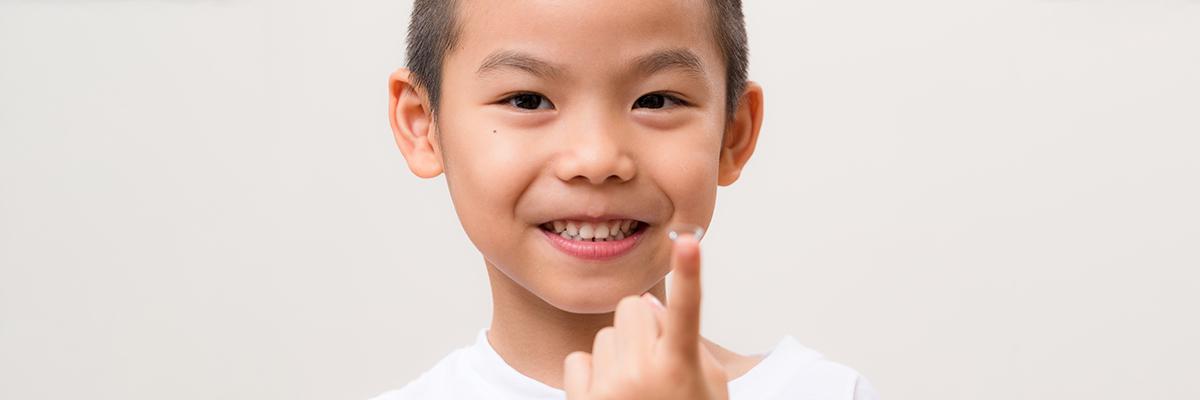You are now being directed to a third party website. Please note that this website is for convenience of the user. spectacularkids is not collecting, storing, or accessing any personal data of the user, and all the information collected, stored, and accessed herein is with the third party https://myeyedoctor.in/ website. You expressly consent to share all your details with https://myeyedoctor.in/

By this time, we all know what myopia is and what are the treatment options available for myopia. In this refractive error mainly 3 treatment modalities are available namely- corrective glasses, contact lenses and surgery.
Here we will be discussing few things about contact lenses and use of contact lenses in children.
What are contact lenses?
Contact lenses are thin, clear plastic disks which are wore in eye to improve vision. They are also called simply ‘contacts’. They float on the tear film covering the cornea.1
If proper care is taken contact lenses proved to be comfortable and convenient option in carrying out daily activities. A data says that around 45 million people in US wear contact lenses.2 Though convenient, contact lenses is not a risk free option. It always comes with proper care and handling techniques. If not wore, cleaned, or stored as indicated they can act as potent source of infection and can lead to microbial keratitis. Always bear in mind while using contact lenses that: Healthy Habits = Healthy Eyes.3
There are 2 main types of Contact Lenses – hard and soft.
Now lets know about them in detail.
Hard contact lenses – commonest of this type is rigid gas permeable lens or RGP lens. As name suggest they are a bit hard and holds shape firmly but oxygen can flow through them to get supplied to eye surface. These are mainly used in astigmatism and keratoconus. They are more durable and permeable compared to soft lenses.1,2,4
Soft contact lenses – this is the preferred choice of contact lenses due to their comfort and availability of their options.
Here are some of the subtypes of soft contact lenses.1,2,4
The question may come to your mind that which is the best option for children or teenager or before that can children wear contact? The answer is yes. Children can safely and successfully wear contact lenses if they care for them properly. This also goes without saying that support, supervision and guidance of parents or other
adults is important. We need to encourage them for healthy habits, hygiene to be followed to reduce risk of encountering infection and other complications.3 While choosing the right option for a child to wear contact lenses many things need to be considered. Like The ideal option for your child or teenager will depend on prescription, level of myopia, pupil size, eye shape, eye sensitivity, personal hygiene, maturity, compliance, lifestyle and sporting activities etc. Your doctor and optometrist will help you to choose the best for your child.Usually daily disposable contact lenses are safest type but again all prescription may not allow its use. Reusable contact lenses can be a better choice for higher prescription.
What research says about use of contact lenses in children with myopia?
In 2020, the BLINK Study was published in the medical journal JAMA. The study conducted on 287 myopic children of 7 to 11 years of age showed that multifocal lenses were more effective in slowing down the myopia than regular single vision lenses.5 Wearing contact lenses can be beneficial and improve child’s perception and confidence than merely seeing things clearly.